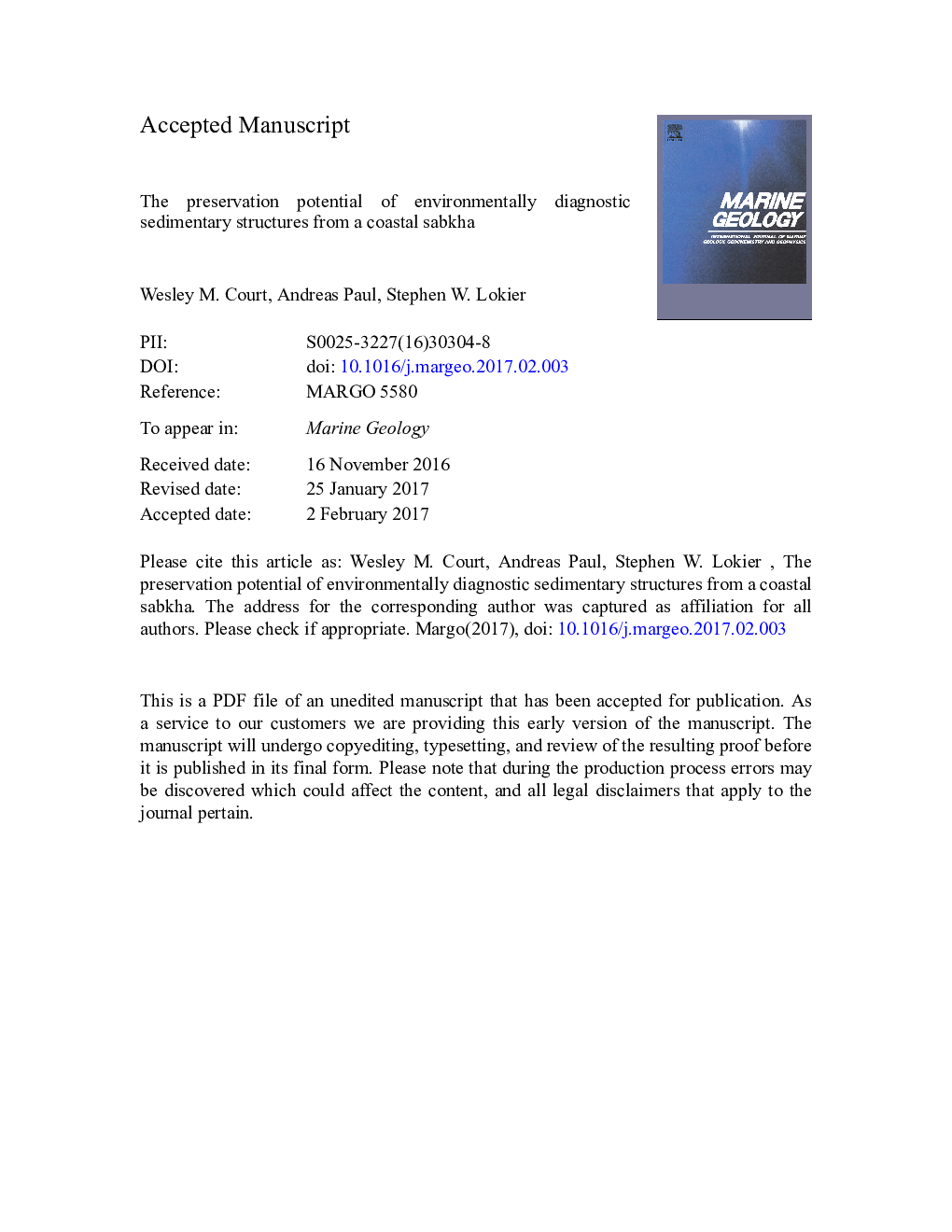| Article ID | Journal | Published Year | Pages | File Type |
|---|---|---|---|---|
| 5784508 | Marine Geology | 2017 | 56 Pages |
Abstract
The Abu Dhabi sabkha constitutes the landward portion of the shallow-sloping carbonate ramp situated on the northwestern coast of the United Arab Emirates (UAE). The sabkha in this region is composed of a complex assortment of carbonate, organic, and evaporitic facies that constitute a regressive sabkha sequence. The surface features of the sabkha can be grouped into distinct, laterally continuous facies associations that are directly correlatable with elevation above present-day sea level. Previous investigations have suggested the employment of the Abu Dhabi sabkha as a modern depositional analogue to ancient carbonate-evaporite formations; however, a quantitative analysis of the relationship between sabkha surface and subsurface characteristics has not previously been undertaken. This study describes in detail the sedimentary structures and textures seen at the sabkha surface and compares them to the Holocene-age facies retained in the shallow subsurface. Of the 36 sedimentary structures observed at the sabkha surface, only seven (19%) are still identifiable in the early burial realm. The majority of the surface structures were lost during early burial as a result of microbial mat decomposition, destructive evaporite precipitation, and compaction. The loss of diagnostic sedimentary features during early burial as a result of fabric-destructive processes has considerable implications for the recognition and interpretation of ancient sabkha sequences. Documenting these processes from a range of modern sedimentary environments will aid in the identification of those diagnostic features that may be reliably employed during paleoenvironmental reconstructions.
Related Topics
Physical Sciences and Engineering
Earth and Planetary Sciences
Geochemistry and Petrology
Authors
Wesley M. Court, Andreas Paul, Stephen W. Lokier,
